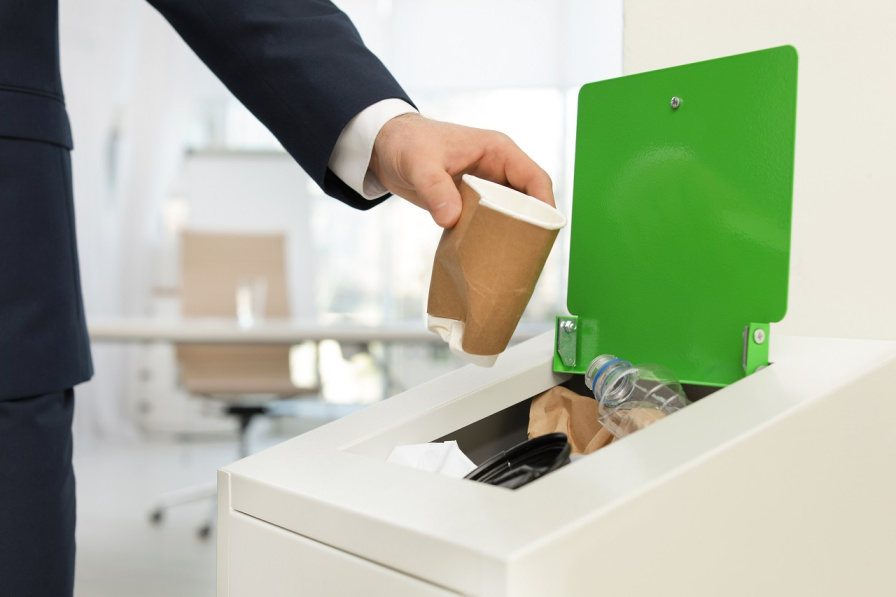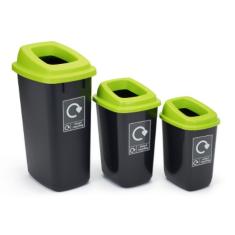How Using Recycling Bins Helps the Environment – Recycling 101
- By Adam Watts
- 17 Jul 2017

How Using Recycling Bins Helps the Environment
Recycling has long been considered one of the premier ways to help save the environment. Reprocessing rubbish to create new products has led to a massive reduction of waste worldwide. Of course, there is still much to be done and pollution remains a raging problem around the globe.
As the world's population continues to soar, so will the generation of rubbish that needs to be recycled. Rubbish that is not recycled will languish in the ever-growing dumps and landfills.
Careful recycling and reprocessing means reducing that dormant waste and reclaiming a small bit of space that would be used to store the rubbish. That small bit of space is multiplied exponentially when the entire population is involved in the process of recycling waste.
Therein lies the value of recycling: rubbish is not simply reused, rather, it is converted back into a usable item. This removes the waste from the environment and adds in its place a newly created, durable good.
Also, it must be noted that the resultant new product is manufactured with less damage to the environment than the original product because less energy is required the second time around. Raw materials are not required to be extracted or formulated because they already exist in the form of the rubbish. This is why the reprocessing is considered green or friendly to the environment in numerous ways.
Not only are sources of raw materials not disturbed in this process, but less energy is consumed during reprocessing than in the original manufacturing process. This is an added bonus for the environment and for the consumer.

Benefits to the Consumer
The consumer stands to benefit from a cost standpoint. The recycled goods are less expensive to create. That is because of the reduction in energy required, and because costs associated with sourcing, extracting, transporting and processing raw materials is averted.
Environmentalists point out that all the energy and waste saved during reprocessing drastically reduces the creation of greenhouse gas emissions and thus has a positive effect on climate change by further reducing carbon emissions associated with the original manufacturing process.
Proper Collection
The first, and perhaps most important step of that process, is proper collection. Discarded rubbish should be properly sorted out so that it can be reprocessed and turned from waste into valuable products. Generally speaking, rubbish should be sorted into recycling bins based on its core element.
Around the home, school and office, common bin categories are: Wood, Plastic, Cardboard, Aluminium, and Paper.
Municipal recycling centres provide bins for those common designations, but may also offer large bins for other recyclable items. Some recycle centres also provide bins designated for the collection of Mobile Phones, Computers, Carpet, Electronic Components, Paint, Motor Oil, Rubber Tyres, Pallets, Scrap Metal, Lead, Cooper, Styrofoam, Cooking Grease and Brown Items.
Brown items are general household furnishings that may include bedding (mattress and box springs), sofas, cabinetry, construction materials, chairs, tables, desks, shelving, and similar items.
Recycling only works when people follow the guidelines provided by the recycling centre and place all rubbish in the appropriate collection bin. This helps avoid cross-contamination and saves time and energy to re-sort the items. If unsure about the proper bin for an item, ask an attendant or person in charge of the facility to avoid any embarrassing and costly mistakes.
The consumer should check with the local facility to determine how much pre-sorting is required and can then acquire the appropriate number of bins for the household collection effort. Separating printed cardboard from packaging cardboard or PET plastics from other forms of plastic may be required. Getting it right from the start will make the transfer of the recyclable rubbish easiest when one arrives at the recycling facility.
Recycling Bins
Home, school and office recycling bins are available today in a wide variety of designs, sizes and colors to match any decorum. Colour-coded bins can make the pre-sort collection easy and fun. This is especially true for school children.
Select a bin that is the proper size for the amount of rubbish generated. Ensure that you have a sufficient number of bins to handle any overflow during periods of excess rubbish generation.
For the office, there are bins for the proper collection and disposal of papers and documents containing personal identifying information. These bins typically feature a lid that can be locked so as to prevent identity theft.
If plastic drink bottles or aluminium drink cans are commonly discarded items, it may be a wise investment to acquire bins designed specifically for those items.
Any investment in recycling bins is an investment in cost-savings, energy savings and the environment. Proper use of these bins makes for a better, cleaner, greener world.














